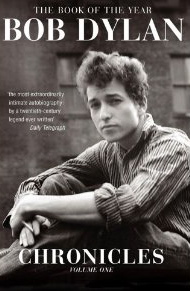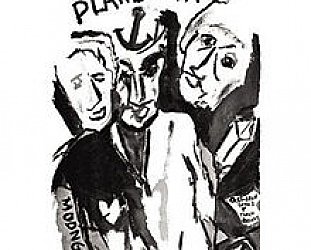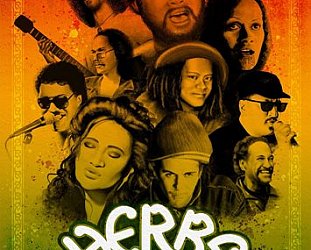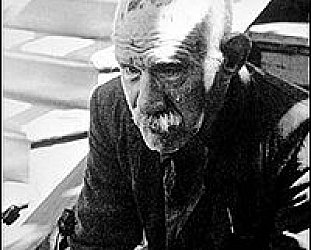Graham Reid | | 3 min read
Bob Dylan: The Levee's Gonna Break

Although Bob Dylan closed his shapeless and directionless Eighties with the acclaimed Oh Mercy album produced by Daniel Lanois, no one would really have considered him ripe for a career reinvention.
And Under the Red Sky of the following year -- a cast which included Slash, Bruce Hornsby, George Harrison and numerous others on material as unworthy as Wiggle Wiggle and Handy Dandy -- seemed to confirm Dylan was a spent force.
He seemed to know that too because in the following years -- perhaps prompted by The Bootleg Series Vol 1- 3 which included extraordinary songs he had discarded down the decades -- he went right back to what had got him into music in the first place: folk and blues songs, which appeared on his two well-received albums of covers Good As I Been To You and World Gone Wrong in '92 and '93 respectively.
At the same time he also abandoned any pretence at being stylish and hip (that jacket on the cover of Empire Burlesque, the film Hearts of Fire) and started dressing in some timeless, riverboat gambler attire complete with pencil-thin moustache.
The Bootleg collection and an MTV Unplugged session where he played many of his classics (he'd wanted to do traditional folk) saw him standing on firm ground, old fans warily coming back and a new audience tuning in.
And then began the most extraordinary career turnaround in popular music -- certainly from someone in their late 50s who had been counted out for well over a decade.
The albums Time Out of Mind ('97), "Love and Theft" (2001) and Modern Times ('06) drew almost unanimous praise, had him picking up Grammys and getting his music played on radio and television again (most conspiciously he appeared in a Victoria's Secret ad).
Between them, the on-going Bootleg series reminded people of his former genius as well, and there was Martin Scorsese's doco No Direction Home which covered those crucial years up until '66.
 And just when it seemed Dylan need do no more but play this music and bathe in the accolades, he delivered his memoir Chronicles Volume 1 (a critically aclaimed best seller) and proved himself a remarkalbe radio host with his Theme Time Radio Hour in which he played a fascinating cross-section of music both obscure and famous . . . and linked them with a witty narrative.
And just when it seemed Dylan need do no more but play this music and bathe in the accolades, he delivered his memoir Chronicles Volume 1 (a critically aclaimed best seller) and proved himself a remarkalbe radio host with his Theme Time Radio Hour in which he played a fascinating cross-section of music both obscure and famous . . . and linked them with a witty narrative.
Bob Dylan -- washed up in the Eighties -- had entered the new century as a man seemingly gifted on multiple fronts.
This fascinating documentary covers all of this in the company of some highly notable commentators, among them Dylan's most consistent and interesting biographers, essayists and critics Clinton Heylin, Robert Christgau, Nigel Williamson and Johnny Rogan. (No women, is Dylan a male preoccupation?).
What is fascinating is when they -- interviewed separately -- disagree on the merits of some albums, although you have to think Christgau is either wilful or ignoring the obvious when he says how much he likes Under a Red Sky while conceding no one else does.
Williamson is especially amusing when, speaking about Chronicles, he observes how galling it was to him to discover he was now clearly outgunned in his own game (writing about music which he had done all his professional life) by Dylan.
Throughout there are short clips of Dylan's videos and some interview footage lifted from No Direction Home which, they observe, was less a Scorsese view of Dylan, than Dylan's view of himself for posterity (given the interviews were conducted by his manager).
Dylan remains a divisive figure in popular culture, perhaps as much now as he was in the Sixties.
There are many who go to his concerts and complain he can't sing (that was said in the Sixties too) and that he simply abuses his songs. These observers note he is a much more consistent performer now than he was for at least a deacde and a half, but his consistency means something different from what a public, wanting to hear crystal clear versions of the albums, would like to hear.
Dylan's speaking voice and the one he deploys when recording are quite different from that which he uses live. That remains an unaddressed conundrum here.
Typical Dylan therefore. Willful and somewhere beyond analysis.
But the intelligent insights these people bring, wedded to discussions of the albums, his film Masked and Anonymous and his public persona (as well as private matters like that mysterious marriage in the early Nineties which Heylin exposed, and him being challenged by his son Jakob's success with the Wallflowers) make this a fascinating documentary for anyone with a passing interest in recent Dylan -- or anyone looking for an explanation as to how that remarkable turn-around was achieved.
Interested in more about recent Bob Dylan? Then try this.






Jeffrey Paparoa Holman - Aug 8, 2011
Thanks Graham
SaveBob-tastic, gotta get one, whose selling?
The "new" Pixie Williams is waiting for me at Marbecks. :-)
Jeffrey
post a comment